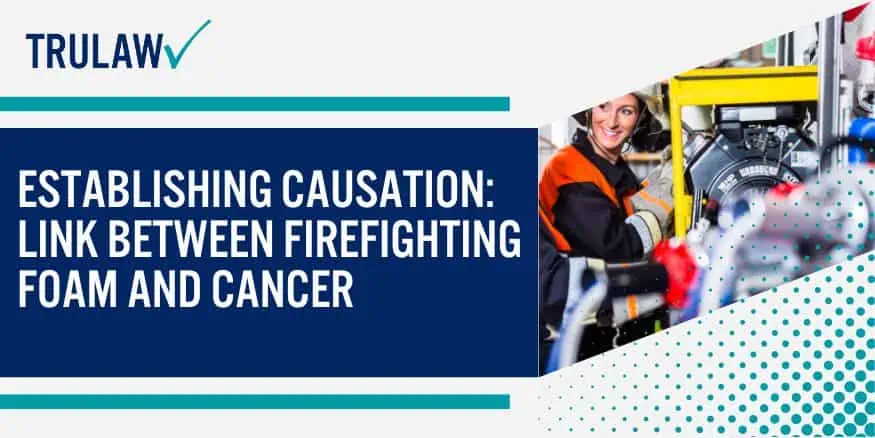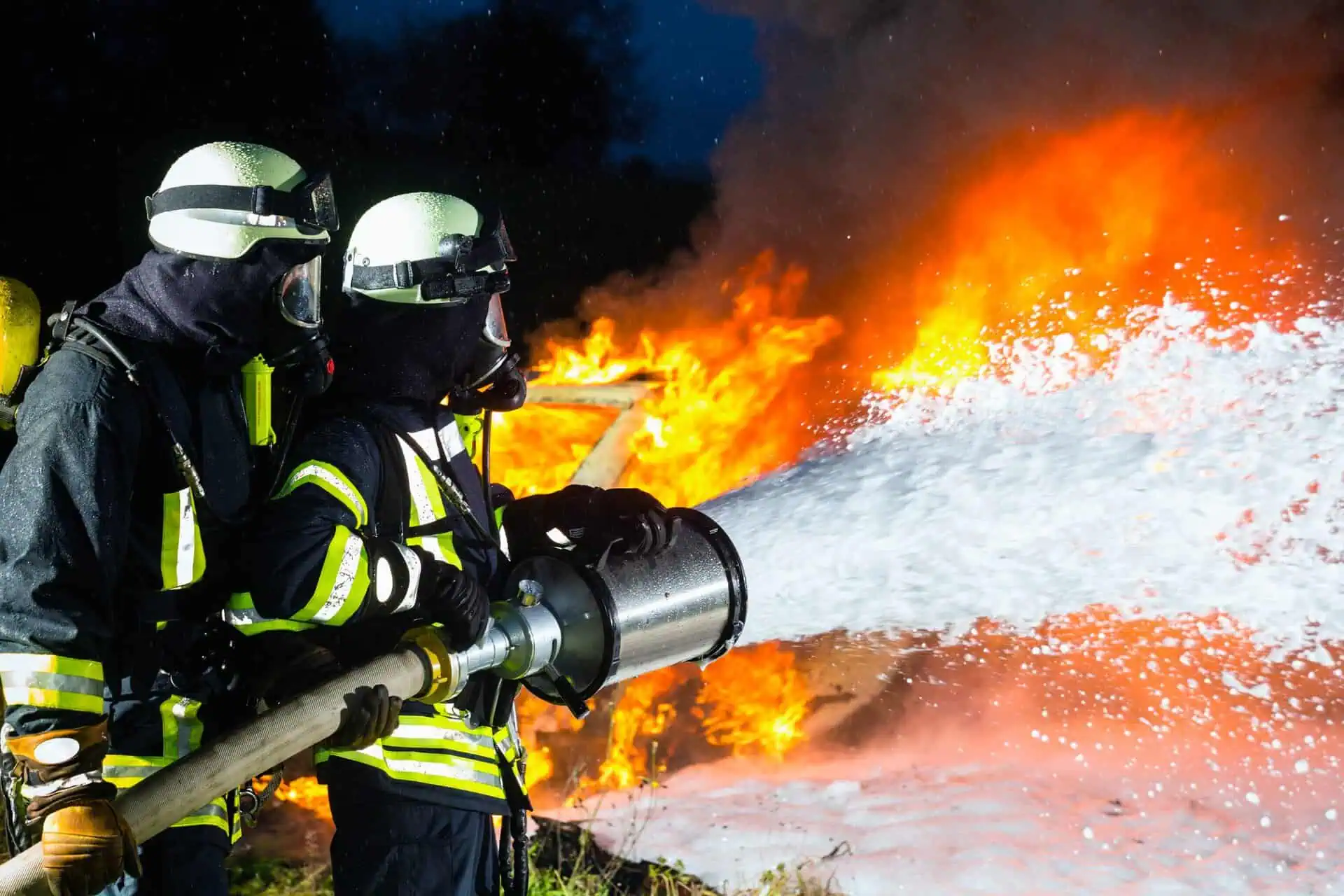Firefighting Foam Lawsuit Consultations: What to Expect?
- Last Updated: July 14th, 2025

Attorney Jessica Paluch-Hoerman, founder of TruLaw, has over 28 years of experience as a personal injury and mass tort attorney, and previously worked as an international tax attorney at Deloitte. Jessie collaborates with attorneys nationwide — enabling her to share reliable, up-to-date legal information with our readers.
Legally Reviewed
This article has been written and reviewed for legal accuracy and clarity by the team of writers and legal experts at TruLaw and is as accurate as possible. This content should not be taken as legal advice from an attorney. If you would like to learn more about our owner and experienced injury lawyer, Jessie Paluch, you can do so here.
Fact-Checked
TruLaw does everything possible to make sure the information in this article is up to date and accurate. If you need specific legal advice about your case, contact us by using the chat on the bottom of this page. This article should not be taken as advice from an attorney.
Key takeaways:
- Firefighters and communities are seeking legal action against manufacturers in order to hold them accountable for the devastating impacts.
- Firefighters regularly come into contact with these harmful substances during emergencies, which can lead to long-term complications.
- Lawsuits have been filed against manufacturers and distributors of firefighting foam products.
Firefighting Foam Lawsuit Consultations: What to Expect?
The increasing number of lawsuits involving AFFF firefighting foam is drawing attention to the negative effects of this commonly used product.
These lawsuits highlight the harmful consequences of PFAS exposure and raise concerns about the health risks associated with firefighting foam.
Firefighters and communities are seeking legal action against manufacturers in order to hold them accountable for the devastating impacts of these foams, which can include cancer and environmental contamination.
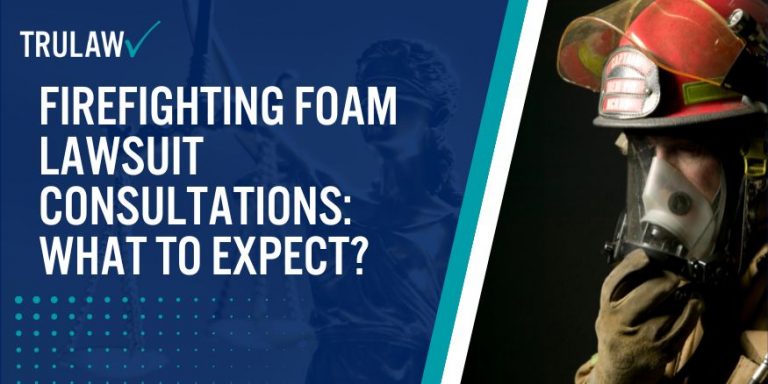
The widespread use of firefighting foam and its far-reaching impact are causes for concern.
As more individuals join the fight against AFFF firefighting foam manufacturers, the urgency to address this issue grows stronger.
Firefighting foam cancer lawyers and dedicated attorneys are leading the charge in advocating for justice on behalf of those affected.
It is crucial to stay updated on the progress of this complex litigation battle and to shed light on the need for changes in the manufacturing and use of firefighter foams.
Updates on the issue of firefighter water contamination and the ongoing PFAS class action lawsuit will be provided.
Table of Contents
Health Risks of Firefighting Foam: Cancer and Toxicity
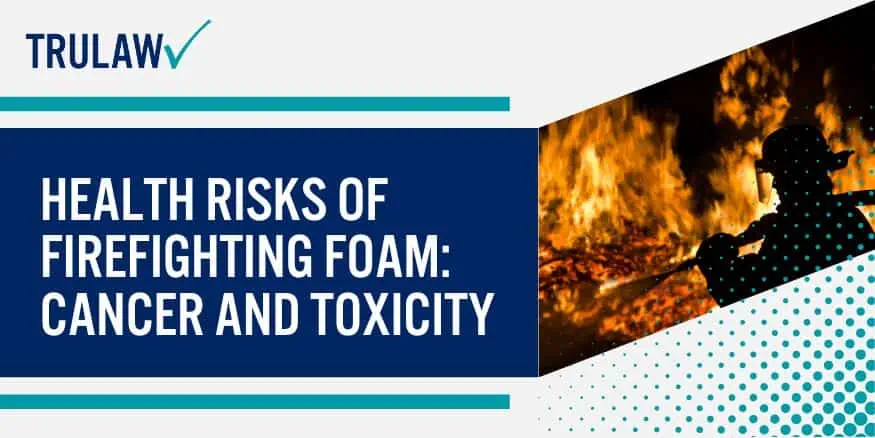
Firefighting foam, also called AFFF, is important for putting out fires.
But it’s important to know that being around this foam can be dangerous.
It can contaminate water and make people sick.
Some chemicals in AFFF, like PFOS and PFOA, can stay in the environment and build up in living things.
These chemicals can cause cancer and other health problems.
Experts say PFOS might cause cancer, and PFOA might too.
These chemicals are really risky to be around.
AFFF exposure can also lead to other health issues.
It can hurt the liver, mess up the immune system, cause thyroid problems, and affect how kids grow.
These problems can stick around for a long time.
Firefighters are at a higher risk of being around AFFF because they use it a lot.
They can touch it directly or get exposed through water that’s been contaminated.
Link between firefighting foam exposure and cancer
Firefighting foam can increase the risk of cancer and other health problems.
Chemicals in the foam are linked to different types of cancer like testicular and kidney cancer.
The foam has a lot of PFAS chemicals that stay in the environment and can build up in our bodies.
This can contaminate water and be harmful to our health.
Toxic chemicals present in firefighting foam
To understand the health risks of firefighting foam, we need to look at the chemicals it contains, like PFAS.
These chemicals are resistant to heat, oil, water, and stains.
But they stay in the environment and our bodies for a long time.
Firefighters and communities are affected by PFAS contamination in water.
The EPA has made more rules, and there’s a lawsuit against the Air Force.
Other health risks associated with firefighting foam
Firefighting foam exposure can lead to health problems like cancer, water contamination, and PFAS contamination.
Studies show that prolonged contact with these chemicals can cause reproductive issues, hormonal disruptions, liver damage, immune system problems, and developmental delays in children.
Firefighters regularly come into contact with these harmful substances during emergencies, which can lead to long-term complications.
Impact on Firefighters’ long-term Health and well-being
Firefighters face a hidden danger from firefighting foam that can contaminate water.
This exposure to toxic chemicals like PFAS can seriously harm their health.
They need protection and support from lawyers who specialize in water contamination cases if they get sick.
Steps should be taken to reduce their exposure and improve their quality of life.
Current Status of Firefighting foam Lawsuit in 2023
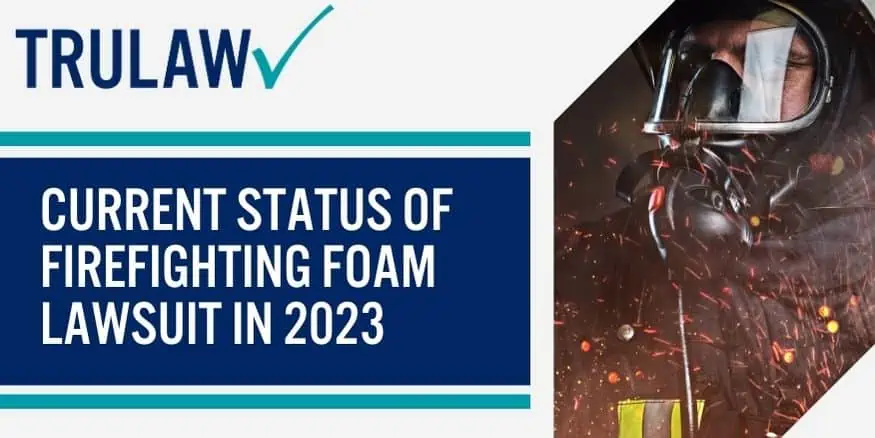
It’s important to stay updated on the ongoing trial and study.
New information may affect the AFFF lawsuits.
There have been many important developments in the AFFF firefighting foam lawsuit this year.
There are legal proceedings happening in different states.
More firefighters and people affected by PFAS contamination are seeking justice.
Lawsuits have been filed against manufacturers and distributors of firefighting foam products.
Some cases have been grouped together for faster resolution.
Some settlements and compensation awards have already been reached.
Progress is expected in resolving the AFFF firefighting foam lawsuits.
The legal system is working to address these claims and consider scientific evidence.
Lawyers are important in these cases.
Potential Settlement Outlook for AFFF Lawsuit in 2023
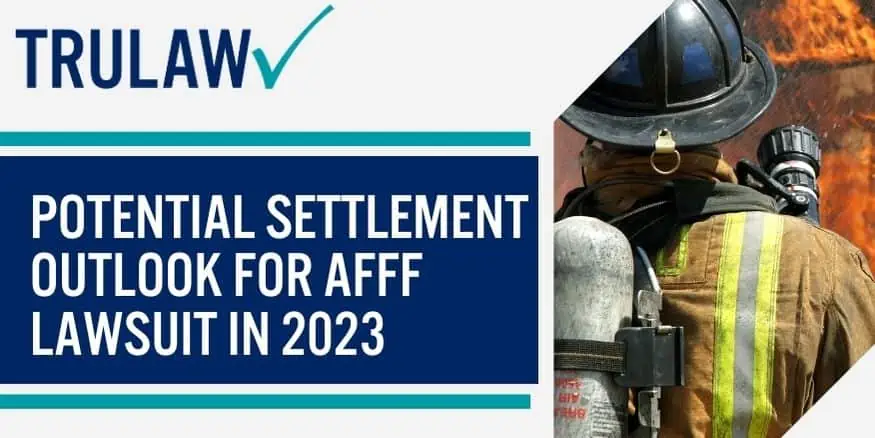
The firefighting foam lawsuit involving PFAS have become a major focal point in recent years, as plaintiffs seek compensation for personal injuries caused by using firefighting foam.
With 2023 against Horizon Therapeutics, lawyers are now analyzing the potential settlement outlook for this ongoing legal battle.
One crucial aspect that cannot be ignored is the adverse health effects associated with PFAS.
PFAS, or per- and polyfluoroalkyl substances, are a group of man-made chemicals that have been widely used in firefighting foams due to their effectiveness in suppressing fires.
However, these chemicals have been linked to various health issues, including cancer, immune system disorders, and developmental problems.
As lawyers delve into the potential settlement outlook for the AFFF lawsuits in 2023, they must consider the mounting evidence linking PFAS exposure to these adverse health effects.
This evidence could significantly impact the outcome of the lawsuits and the potential settlements reached.
It is important to note that the AFFF lawsuits are complex and involve multiple parties, including manufacturers of firefighting foam, government entities, and individuals affected by PFAS exposure.
The outcome of these lawsuits will likely depend on various factors, such as the strength of scientific evidence, the extent of damages suffered by plaintiffs, and the legal arguments presented by both sides.
Given the increasing awareness of the health risks posed by PFAS and the growing number of lawsuits being filed.
It is likely that the potential settlement outlook for the AFFF lawsuits in 2023 will be closely scrutinized.
The outcome of these lawsuits could have significant implications for future litigation involving PFAS and other harmful chemicals.
Analysis of potential outcomes for plaintiffs in the AFFF lawsuit
Firefighting foam lawsuits can have different outcomes.
One possibility is a global settlement that solves all cases and helps everyone involved, including lawyers.
But it’s difficult because there are many defendants in these lawsuits.
Another option is individual settlements for each plaintiff and defendant.
This takes longer but allows lawyers to present their evidence in court.
Discussion on factors influencing settlement negotiations
Settlement negotiations in firefighting foam lawsuits are influenced by different factors.
The strength of evidence from both plaintiffs and defendants plays a big role.
If the evidence supporting the plaintiffs’ claims is strong, there is a higher chance of getting a good settlement.
Lawyers handling these cases have to deal with the complexities of court proceedings.
Past settlements in court serve as references for future resolutions in class action lawsuits.
Judgments from similar trial cases can set examples and help guide negotiations between lawyers for fair compensation.
Plaintiffs’ attorneys can use these examples to their advantage during negotiations, aiming for similar or higher settlement amounts.
Mention any previous settlements as reference points for possible future resolutions
In 2018, chemical companies paid $671 million in a firefighting foam lawsuit about contaminated drinking water.
This shows that people affected by PFAS contamination can receive large compensation.
In 2020, a firefighter in Michigan got $1.7 million in a lawsuit for developing cancer from firefighting foam chemicals.
Highlight challenges faced by both plaintiffs and defendants
Both plaintiffs and defendants in firefighting foam lawsuits face challenges.
Plaintiffs have a tough time proving that their health issues are directly caused by exposure to PFAS in AFFF of toxic firefighting foam.
They need lots of medical evidence and expert testimony, which can make the class action lawsuit take longer.
Defendants, on the other hand, may try to get the lawsuit dismissed without going to trial.
They might say there isn’t enough evidence or question the plaintiffs’ theories about what caused their health problems.
This adds more complexity to the settlement process.
Identifying High-Risk Professions Exposed to Firefighting Foam
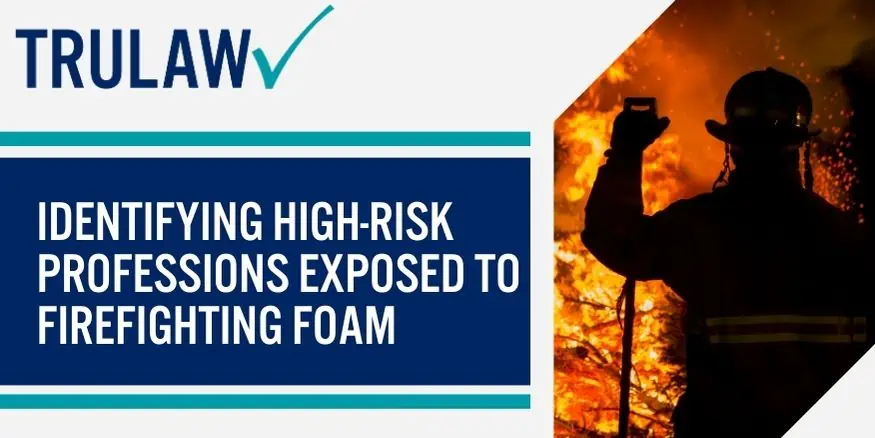
To reduce risks, these professions should prioritize safety measures, provide proper training and protective gear, and explore alternative fire suppression methods without PFAS.
This is important in light of potential lawsuits and trials related to this issue.
The exposure to firefighting foam containing PFAS can have serious health consequences, including an increased risk of cancer, immune system problems, hormonal disruptions, and liver damage.
Therefore, it is crucial for professions like firefighters, airport personnel, military personnel, and municipal firefighters to take necessary precautions.
The National Firefighter Registry has been established to monitor the health effects of PFAS exposure, highlighting the significance of this issue.
By prioritizing safety measures, providing adequate training and protective gear, and exploring alternative fire suppression methods.
These high-risk professions can mitigate the risks associated with PFAS exposure and protect the well-being of their personnel.
Defendants in the AFFF Lawsuit: Holding Manufacturers Accountable
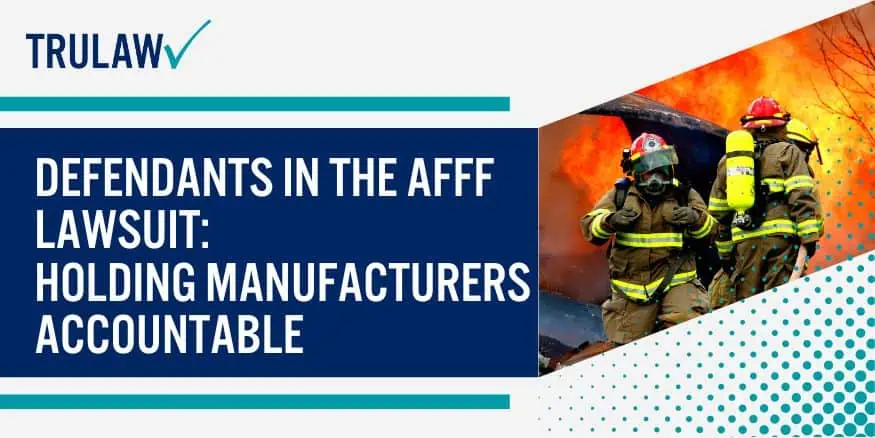
The firefighting foam lawsuit, also known as the firefighting foam lawyers trial, has shed light on the involvement of major manufacturers in the distribution of PFAS-containing foam.
These companies are facing accountability for their contribution to the production and distribution of harmful chemicals.
The plaintiffs in this lawsuit are seeking justice for the cancer-causing damages inflicted by these chemicals.
Resolute in their determination to ensure that the manufacturers are held responsible.
Role of Manufacturers in Producing or Distributing Firefighting Foam
Manufacturers have a crucial responsibility in ensuring the development and distribution of safe products for consumers, particularly in the case of firefighting foam used by firefighters to effectively combat fires.
In the AFFF exposure trial, defendants such as Company A, Company B, and Company C were held accountable for producing and distributing firefighting foam class action.
That contained PFAS chemicals, which have been associated with cancer.
These manufacturers were obligated to conduct thorough research on the potential risks associated with using PFAS-based foams before introducing them to the market.
It was their duty to ensure that these products met safety standards and did not pose any harm to individuals or the environment during the AFFF trial to file an AFFF lawsuit with firefighting foam attorneys.
By fulfilling their role, manufacturers can contribute to the overall safety and well-being of firefighters and the general public.
Responsibility to Ensure Product Safety
The defendants in the AFFF lawsuit didn’t make sure their firefighting foam was safe.
This put firefighters and others at risk of getting cancer from harmful PFAS chemicals.
Manufacturers should have tested and researched their products to find out the dangers of PFAS chemicals.
But they didn’t do this, and now people are suffering because of it.
Legal Strategies Employed by Plaintiffs against Manufacturers
Plaintiffs in the AFFF firefighting foam lawsuit are using different legal strategies to make manufacturers take responsibility for their actions with PFAS, a harmful firefighting foam linked to cancer.
They want to prove that the manufacturers should be held accountable and get compensation for the harm caused by exposure to PFAS.
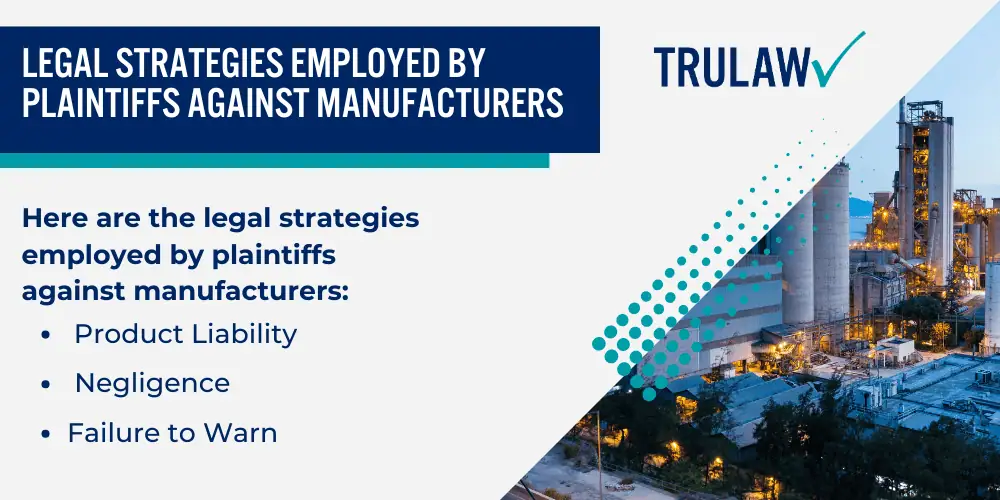
Here are the legal strategies employed by plaintiffs against manufacturers:
1. Product Liability: Plaintiffs say that manufacturers are responsible for injuries caused by their defective products.
They argue that the firefighting foam with PFAS chemicals was dangerous and didn’t have proper warnings or instructions about its risks.
2. Negligence: Plaintiffs claim that manufacturers were careless in making and distributing the firefighting foam without properly checking how harmful it could be.
They say these companies didn’t take reasonable care, leading to injuries and damages.
3. Failure to Warn: Plaintiffs argue that the defendants didn’t give enough warnings about the health dangers of using firefighting foam with PFAS chemicals.
Establishing Causation: Link Between Firefighting Foam and Cancer
Examination of scientific studies linking firefighting foam to cancer
Over the years, scientific evidence has been accumulating, providing insights into the potential connection between firefighting AFFF foam containing per- and polyfluoroalkyl substances (PFAS) and different types of cancer.
Several studies have been conducted to investigate the effects of exposure to Aqueous Film-Forming Foam (AFFF) used in fighting fuel fires, and these studies have revealed concerning findings.
For example, the Environmental Protection Agency (EPA) recently conducted a study examining cases where individuals exposed to AFFF containing PFAS developed cancer.
The chemicals present in AFFF, such as PFAS, have been identified as potential contributors to the increased risk of cancer.
PFAS compounds are known for their ability to persist in the environment and accumulate in the human body.
Once absorbed, they can disrupt normal cellular functions and contribute to the development of various diseases, including cancer.
Specific types of cancer, such as pancreatic cancer and prostate cancer, have been associated with exposure to AFFF.
It is important to continue studying the link between firefighting foam and cancer to better understand the risks and develop appropriate preventive measures.
The findings from these scientific studies highlight the need for further research and potential regulatory actions to protect firefighters and other individuals who may be exposed to AFFF containing PFAS.
Highlight challenges faced in establishing a direct causal relationship
It’s hard to prove that firefighting foam with PFAS causes cancer because there are many factors to consider.
Firefighters have other risks at work, so it’s tough to say that PFAS exposure is the only cause.
Cancer can take a long time to develop after being exposed to PFAS, so it’s hard to say for sure that it caused it.
Also, people have different genes that can make it even more complicated to figure out if PFAS is the cause of cancer.
Discuss the weight of evidence supporting the link between AFFF and cancer, specifically focusing on the role of PFAS.
Despite these challenges, mounting evidence supports the association between firefighting foam exposure and an increased risk of developing certain types of cancers.
The EPA’s investigation into AFFF-related cases revealed a consistent pattern pointing towards this connection.
Seeking Compensation in the AFFF Lawsuit
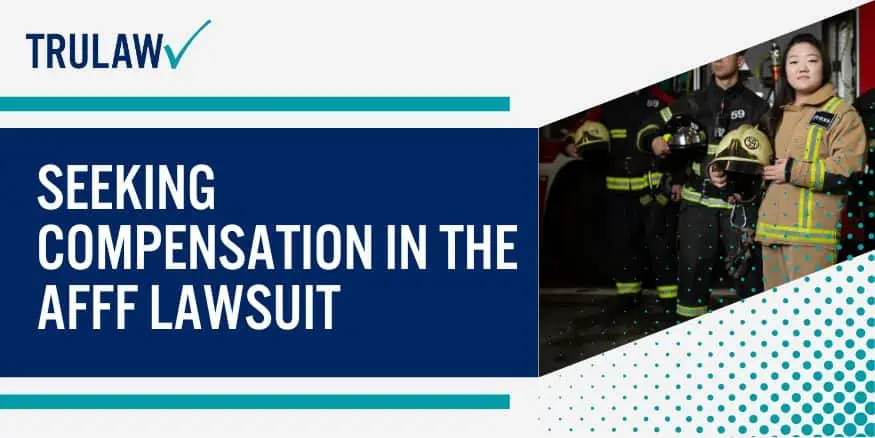
The AFFF lawsuit allows people harmed by firefighting foam with PFAS to get money for their health problems.
PFAS foam is dangerous and can cause cancer and toxicity.
People are suing the companies that make it.
The lawsuit is still happening in 2023, and there might be settlements soon.
It’s important to know which jobs put people at high risk of cancer from PFAS and AFFF foam.
Firefighters, military, airport workers, and others who work with these harmful products are most at risk.
Holding the manufacturers responsible for making and selling these products is part of seeking justice.
Proving that PFAS foam, especially AFFF with PFAS, causes cancer is important for winning these lawsuits.
Studies show a connection between exposure to PFAS foam and different types of cancer.
This evidence helps people who are suing for compensation.
If you want to take legal action for PFAS contamination and the risk of cancer, it’s important to know what’s happening with the AFFF lawsuit.
Settlements for PFAS and cancer are not guaranteed, but they give hope to people affected by this issue.
Staying informed about any updates can help you understand what might happen next.
To make sure you get fair compensation for your injuries from PFAS foam.
It’s important to talk to a lawyer who knows about product liability cases, especially ones involving PFAS and cancer.
They can help you through the legal process and deal with the complicated AFFF lawsuit.
Discussing the Financial Arrangements with the AFFF Lawyer
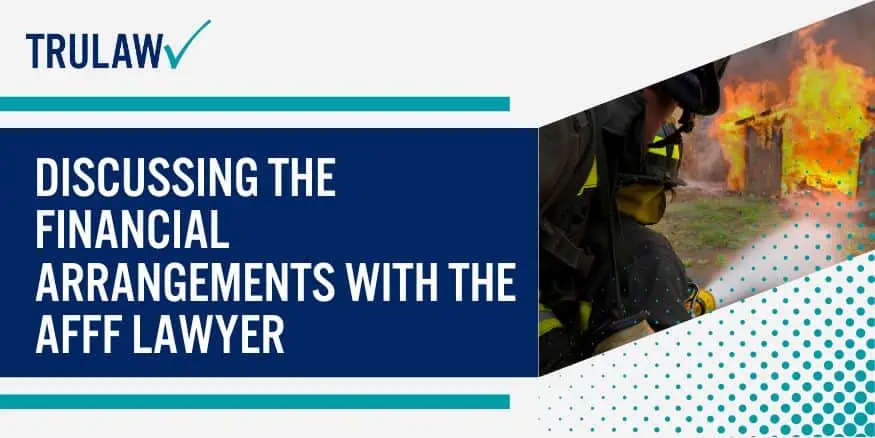
AFFF lawyers typically operate on a contingency fee basis, meaning they only receive payment if they successfully secure compensation for their clients.
Instead of charging an upfront fee or an hourly rate, these lawyers earn a percentage of the total amount recovered.
The specific percentage can vary depending on factors such as the complexity of the case and the agreement between the lawyer and the client.
It is important to have a thorough discussion with your AFFF lawyer about the fee structure to ensure both parties have a clear understanding of how the lawyer will be compensated.
This arrangement allows individuals who may not have the financial means to hire a lawyer upfront to still pursue a legal claim.
The lawyer’s fee is typically deducted from the total amount recovered, meaning clients do not have to pay anything out of pocket unless their case is successful.
This fee structure provides financial flexibility and allows clients to seek justice without incurring significant upfront costs.
Exploring Potential Approaches for Your AFFF Lawsuit
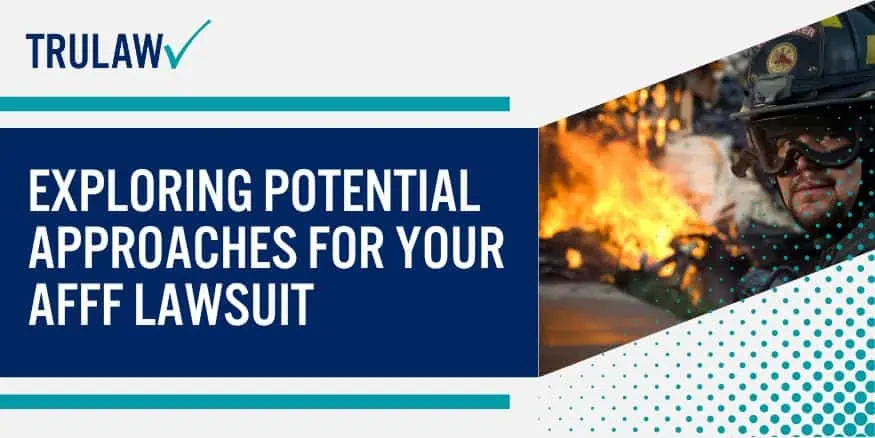
If you’ve been affected by the firefighting foam known as AFFF, there are a few options to consider in pursuing a lawsuit.
One option is to join a class-action lawsuit, where you team up with others who have similar claims against the same defendant.
This can be beneficial as it allows you to share legal costs and increase your chances of success.
By pooling your resources with others, you can hire experienced lawyers who specialize in these types of cases.
Another approach is filing an individual lawsuit, where you take legal action on your own.
While this gives you more control over your case, it may involve higher costs.
You’ll need to hire your own attorney and cover all associated expenses.
However, going this route allows you to tailor your case specifically to your circumstances and seek compensation that accurately reflects the damages you have suffered.
Alternatively, you could explore the option of settling the matter outside of court through negotiations with the responsible party.
This can offer a quicker resolution but may result in less compensation.
Settlement negotiations involve both parties attempting to reach a mutually agreeable solution without involving the court system.
This approach can save time and money by avoiding lengthy legal proceedings.
It’s important to note that settlements often result in lower payouts compared to what might be awarded in a successful trial.
Therefore, it’s crucial to carefully consider these approaches and consult with a qualified attorney to determine the best course of action for your specific situation.
AFFF Lawsuit Frequently Asked Questions
-
If you’ve been impacted by AFFF contamination, there are several avenues you can explore for legal action.
You can join a class-action lawsuit with others who have similar claims against the same defendant, file an individual lawsuit on your own, or attempt to settle the matter outside of court through negotiations with the responsible party.
-
Joining a class-action lawsuit allows you to collaborate with others who share similar claims, which can reduce legal costs and increase chances of success.
By pooling resources, you can hire experienced lawyers who specialize in AFFF cases and work collectively to seek compensation.
-
Filing an individual lawsuit means taking legal action on your own, providing more control over your case.
However, this approach may involve higher costs, as you’ll need to hire your own attorney and cover associated expenses.
In contrast, a class-action lawsuit involves teaming up with others and sharing legal costs, potentially reducing financial burdens.
-
Settling the AFFF lawsuit outside of court involves negotiations between you and the responsible party to reach a mutual agreement.
This can lead to a quicker resolution than a trial, saving time and money.
However, it’s essential to know that settlements often result in lower payouts than potential trial awards.
Careful consideration and legal guidance are crucial when pursuing this approach.

Managing Attorney & Owner
With over 25 years of legal experience, Jessica Paluch-Hoerman is an Illinois lawyer, a CPA, and a mother of three. She spent the first decade of her career working as an international tax attorney at Deloitte.
In 2009, Jessie co-founded her own law firm with her husband – which has scaled to over 30 employees since its conception.
In 2016, Jessie founded TruLaw, which allows her to collaborate with attorneys and legal experts across the United States on a daily basis. This hypervaluable network of experts is what enables her to share the most reliable, accurate, and up-to-date legal information with our readers!
Additional AFFF Lawsuit resources on our website:
Here, at TruLaw, we’re committed to helping victims get the justice they deserve.
Alongside our partner law firms, we have successfully collected over $3 Billion in verdicts and settlements on behalf of injured individuals.
Would you like our help?
At TruLaw, we fiercely combat corporations that endanger individuals’ well-being. If you’ve suffered injuries and believe these well-funded entities should be held accountable, we’re here for you.
With TruLaw, you gain access to successful and seasoned lawyers who maximize your chances of success. Our lawyers invest in you—they do not receive a dime until your lawsuit reaches a successful resolution!
AFFF Lawsuit claims are being filed against manufacturers of aqueous film-forming foam (AFFF), commonly used in firefighting.
Claims allege that companies such as 3M, DuPont, and Tyco Fire Products failed to adequately warn users about the potential dangers of AFFF exposure — including increased risks of various cancers and diseases.
Depo Provera Lawsuit claims are being filed by individuals who allege they developed meningioma (a type of brain tumor) after receiving Depo-Provera birth control injections.
A 2024 study found that women using Depo-Provera for at least 1 year are five times more likely to develop meningioma brain tumors compared to those not using the drug.
Suboxone Tooth Decay Lawsuit claims are being filed against Indivior, the manufacturer of Suboxone, a medication used to treat opioid addiction.
Claims allege that Indivior failed to adequately warn users about the potential dangers of severe tooth decay and dental injuries associated with Suboxone’s sublingual film version.
Social Media Harm Lawsuits are being filed against social media companies for allegedly causing mental health issues in children and teens.
Claims allege that companies like Meta, Google, ByteDance, and Snap designed addictive platforms that led to anxiety, depression, and other mental health issues without adequately warning users or parents.
Transvaginal Mesh Lawsuits are being filed against manufacturers of transvaginal mesh products used to treat pelvic organ prolapse (POP) and stress urinary incontinence (SUI).
Claims allege that companies like Ethicon, C.R. Bard, and Boston Scientific failed to adequately warn about potential dangers — including erosion, pain, and infection.
Bair Hugger Warming Blanket Lawsuits involve claims against 3M — alleging their surgical warming blankets caused severe infections and complications (particularly in hip and knee replacement surgeries).
Plaintiffs claim 3M failed to warn about potential risks — despite knowing about increased risk of deep joint infections since 2011.
Baby Formula NEC Lawsuit claims are being filed against manufacturers of cow’s milk-based baby formula products.
Claims allege that companies like Abbott Laboratories (Similac) and Mead Johnson & Company (Enfamil) failed to warn about the increased risk of necrotizing enterocolitis (NEC) in premature infants.
Here, at TruLaw, we’re committed to helping victims get the justice they deserve.
Alongside our partner law firms, we have successfully collected over $3 Billion in verdicts and settlements on behalf of injured individuals.
Would you like our help?
